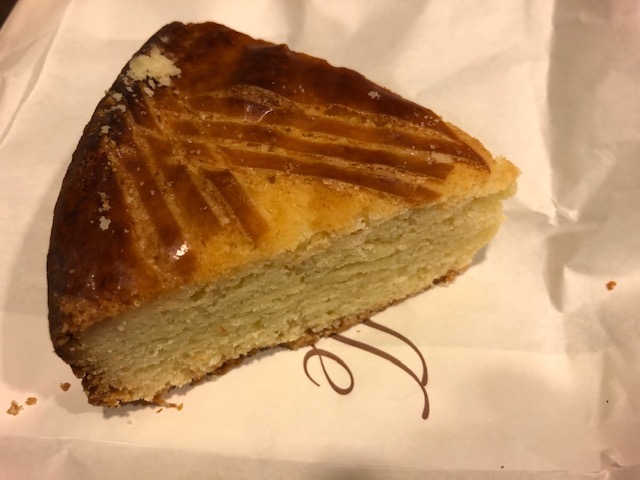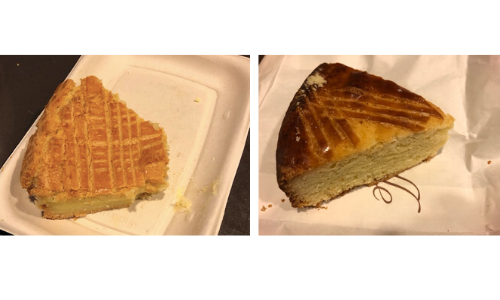One of the inadvertent side effects of eating mostly outside my neighborhood is that I have a tendency to overlook good food when it’s right nearby. Or rather, I should say, I have a tendency to investigate less and to dismiss more easily after a single so-so experience.
Such was the case at Epicerie Boulud across from Lincoln Center, Daniel Boulud’s takeout patisserie and café adjoining Boulud Sud. I’d tried a few underwhelming items from there over the years—overstuffed, uninventive, not-terribly-fresh-tasting sandwiches, mediocre gelato—and so the spot simply fell off my radar.
Sure, some of the pastry looked beautiful, but there were other French spots in the neighborhood (Maison Kayser, Millefeuille) that had similar offerings with less attitude. I mean, there’s a certain level of snootiness that one expects from a high-end French bakery, but Epicerie Boulud always struck me as a little over the top, even by Manhattan standards.
A few months back, however, I started stopping in there occasionally to make sure I wasn’t missing out on anything worth trying, and during one of those visits, I noticed something that was the same size and shape as a galette des rois, and that had a similar ultra-flakey, buttery golden-brown crust, but was filled with custard instead of ground almonds. Turns out it was a gateau Basque (Basque cake).

It looked positively unexciting by Epicerie Boulud standards; however, it also looked like the kind of basic yet masterfully produced kind of pastry that gets taken for granted in France but that can be challenging to find in the U.S., one that’s more about the quality of the ingredients than fancy add-ons. (Call it the anti-cupcake.) At any rate, it was delicious: simple and perfectly done, sweet but not excessively so and with just enough stickiness (butter!) in the dough to prevent it from disintegrating into a sea of crumbs when cut into.
Still, I wanted to see if I could find something a little more basic, closer to a pure galette; the vanilla custard in the Basque cake wasn’t overly heavy, but it was rich enough to make it the sort of thing I’d want to eat only once in a while. I found what I was looking in the form of Breton cake, at the Long Island City outpost of Cannelle Bakery.

At first glance, the Breton cake was even more unassuming than the Basque: hard, slightly dry, and a bit crumbly, almost closer to a biscuit than a cake. I briefly worried that my enthusiasm was misplaced and that I should have opted for something a little, well, sexier.
As it turned out, though, my concerns were misplaced. The dough was studded with bits of sea salt, and the individual flavors of the eggs, flour, and sugar melded together but also retained just enough of their identities to make me aware of just how few ingredients had been used. The effect was surprisingly subtle and sophisticated for such a simple piece of pastry. I’ve eaten a lot of similar items that aimed for this kind of effect, but it was nevertheless surprising to encounter one that pulled it off so successfully.
At one point I tried slathering some of my favorite Alain Millat blonde orange marmalade on it, and although it was delicious, the assertiveness of the orange in the jam overshadowed the cake just a little too much, and so I went back to eating it plain. There were crumbs galore by the time I was done, but I found myself fishing in the bottom of the bag so as not to miss a bit. This is something I could eat every day.

